Comprehensive Insights on Termite Baiting Systems
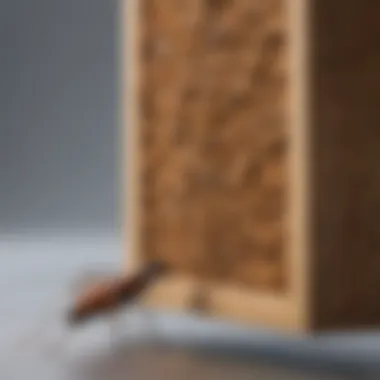
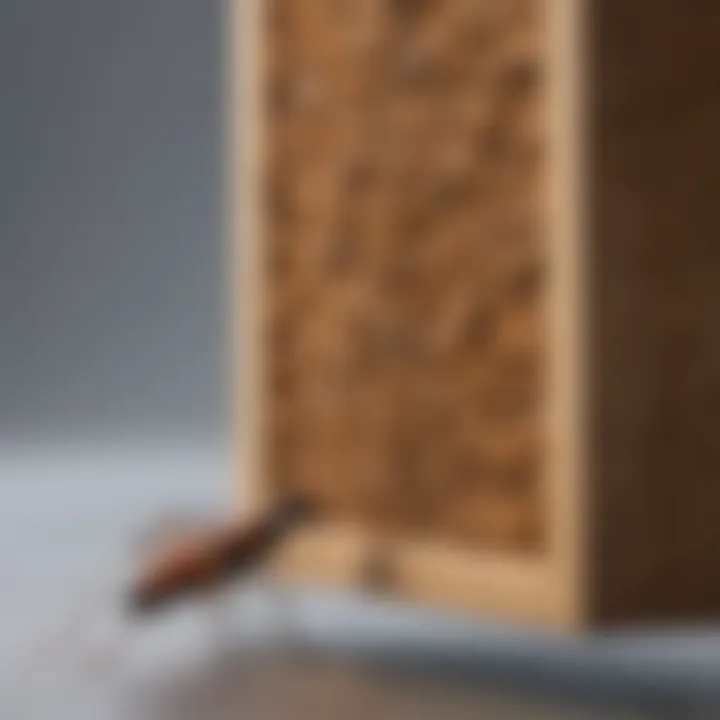
Intro
Termite infestations pose significant risks to homes and properties. Understanding how to identify these pests and manage them effectively is vital for any homeowner.
Termites can cause extensive damage, often hidden from view until it is too late. Effective management begins with knowledge. This article will offer a comprehensive guide on termite baiting systems, examining different options available in the market. This aims to provide homeowners and pest control professionals with the necessary insights to battle these destructive pests.
Before diving into baiting systems, it is essential to identify the pests effectively and understand some prevention strategies. This will provide a foundation for appreciating the efficacy of various treatment options available, including both chemical and natural methods. Let's begin with pest identification.
Preface to Termite Baiting Systems
Termite baiting systems have gained attention as effective solutions for managing termite infestations. This is especially relevant for homeowners who face the challenges posed by these destructive pests. Understanding the mechanisms and advantages of baiting systems can aid in making informed choices.
Termites can cause significant damage to properties if not controlled effectively. Traditional chemical treatments can be effective but also come with concerns about safety and environmental impact. Baiting systems offer alternative approaches, focusing on attracting termites away from the structure and using slow-acting poisons. This method ensures that the entire colony is targeted over time, rather than just immediate elimination of visible pests.
The introduction of these systems into pest management strategies raises important considerations. They can be more environmentally friendly and safer for households, particularly those with children or pets. Additionally, these systems often require less invasive installations compared to traditional treatments, which may need drilling or trenching. Homeowners should weigh these benefits against potential drawbacks, like the time it may take to see results and the necessity of routine maintenance.
This section sets the stage for exploring termite baiting systems in detail, including the science behind these approaches, types of products available, and expert recommendations on effective use. With knowledge inclined towards these systems, homeowners can engage in proactive strategies to protect their properties from the threat of termites.
Understanding Termite Behavior
Understanding termite behavior is crucial for effective pest management, particularly when utilizing baiting systems. Termites are social insects, and their interactions with one another and their environment directly influence the success of control measures. By learning about their habits, homeowners can choose the right strategies to deal with infestations. The insights gathered on termite behavior provide the foundation on which effective baiting protocols are built.
Life Cycle of Termites
Termites undergo a complex life cycle that consists of several stages: egg, nymph, and adult. Adult termites can be further divided into three castes: workers, soldiers and reproductive. The length of this life cycle varies by species, but it typically spans several months to years. Understanding these stages helps in targeting the right time for intervention, ensuring maximum effectiveness of the baiting systems. For example, applying bait when nymphs are present can significantly increase the bait's chances of being consumed by the worker termites, which are responsible for feeding the colony.
Types of Termites
Termites are diverse, with notable species that thrive in various environments. Each type exhibits specific behaviors that necessitate tailored baiting approaches. Understanding these variations aids in selecting the appropriate baiting systems.
Subterranean Termites
Subterranean termites inhabit soil, making them the most prevalent type in the United States. One key characteristic of these termites is their ability to travel long distances underground in search of food. This behavior makes them particularly challenging to control. Since they often infest structures from below, baiting systems designed for subterranean termites must be installed along the foundation perimeter where they tend to forage. Their adaptability can be both a disadvantage and an advantage; while they can find bait stations quickly, they may also evade poorly placed traps.
Drywood Termites
Drywood termites are distinct in that they can infest dry wood without needing contact with soil. This trait allows them to be more discreet, as their colonies can remain hidden within walls or furniture. Their ability to thrive in such conditions can lead to significant structural damage before detection. Baiting systems for drywood termites often require different techniques since these termites do not typically travel in the same way as subterranean species. Effective control often involves a combination of baiting and other treatment methods to ensure thorough eradication.
Dampwood Termites
Dampwood termites prefer moist wood and are often found in decayed stumps and logs. Their presence indicates a significant moisture problem, which should be addressed alongside pest control efforts. These termites are larger and less prevalent than others, but their unique habitat makes them critical to address in specific environments. Baiting systems may be less effective in this case, as dampwood termites typically do not travel far from their wet environment. Understanding their specific ecological needs can help tailor the baiting approach better.
"Successful termite management hinges on understanding not only the behaviors but also the specific species present in your environment."
In summary, grasping the life cycle and types of termites enables homeowners to implement more effective baiting solutions. The success of any termite management strategy greatly relies on this understanding, ensuring that the chosen methods align with the unique characteristics and behaviors of targeted termite species.
Overview of Baiting Techniques
Understanding baiting techniques is crucial in the realm of termite management. These methods provide alternative and effective strategies for dealing with termite infestations, catering to both immediate and long-term needs of homeowners. Baiting systems have become popular due to their targeted approach, minimizing the use of broad chemical treatments. This specificity leads to reduced environmental impact and less risk to non-target organisms.
When considering baiting systems, understanding their operational context is vital. These systems usually consist of bait stations placed strategically around a property. The bait is designed to attract termites, allowing for controlled exposure to active ingredients. The effectiveness of a baiting system depends on multiple factors, including termite species present, bait choice, and installation practices.
Therefore, neglected areas such as location, frequency of inspection, and even environmental conditions can alter their success. Homeowners often appreciate the low disturbance factor of baiting systems compared to traditional chemical treatments. With the ability to monitor the effectiveness over time, homeowners can make informed decisions grounded on their findings.
What are Termite Baiting Systems?
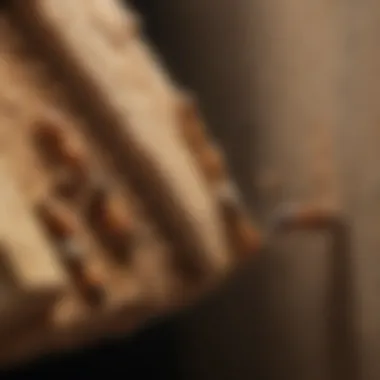
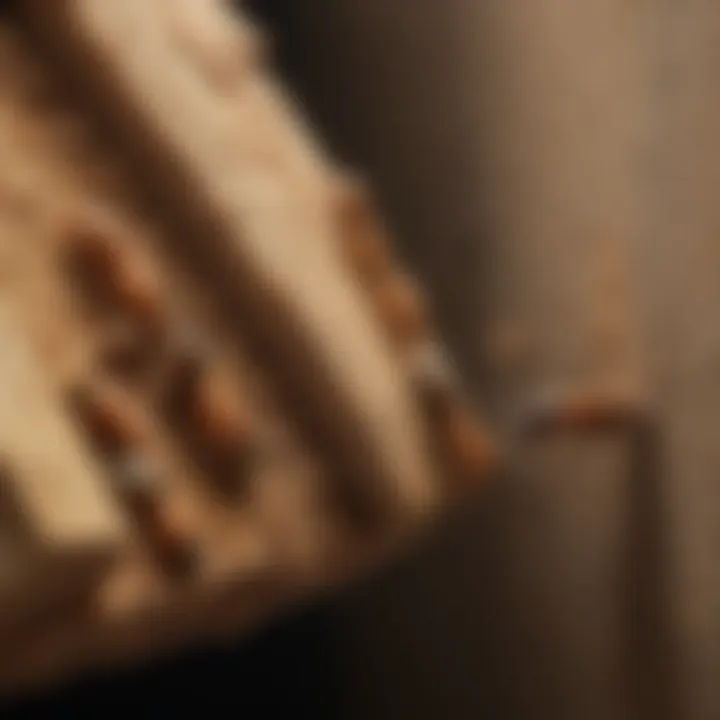
Termite baiting systems are designed to lure termites into a controlled environment where they can ingest a toxic bait. These systems typically consist of underground bait stations that house the bait. These bait stations can strategically be positioned around perimeters of homes or structures where termites are likely to travel. The main goal is not just to kill the current termite population but to prevent future infestations by targeting the colony.
The bait contains active ingredients specifically formulated to affect the termites' ability to molt, ultimately leading to their demise. Unlike standard pesticides, baiting systems aim to eradicate colonies rather than just kill individual insects. The deployment of baiting systems is generally less intrusive and can also function efficiently in conjunction with traditional pest control methods.
Comparative Analysis: Baiting vs. Chemical Treatments
When homeowners face termite problems, they often weigh the options between baiting and chemical treatments. The two methods serve the same purpose but operate differently and have unique merits and drawbacks.
Baiting Systems
- Target colonies directly, potentially offering a long-term solution.
- Low environmental risk since they minimize pesticide use.
- Less invasive, requiring no major disruption of the property.
- Regular monitoring allows for adaptability in the management plan.
Chemical Treatments
- Provide immediate results, killing existing termites upon contact.
- Can treat a wide area quickly but may require re-application over time.
- Possible negative impacts on the environment and non-target species, raising concerns for some homeowners.
- Often demand significant excavation or drilling, which can be disruptive.
In summary, baiting systems can be a viable solution for managing termite issues with a focus on long-term effectiveness. Conversely, chemical treatments might be more appropriate for immediate relief. Homeowners must assess their specific circumstances to determine which approach aligns with their needs.
Key Components of Baiting Systems
Understanding the key components of termite baiting systems is essential for effective termite control. These components determine the efficiency and success rate of the baiting strategy. Key aspects include bait stations and active ingredients in the baits, which play vital roles in how such systems operate. Evaluating these components helps homeowners make educated choices about their pest management methods.
Bait Stations
Bait stations are critical to the operation of termite baiting systems. These stations are strategically placed around a property to attract termites. The positioning and design of bait stations can greatly influence their success in termite control. Well-placed bait stations monitor termite activity, enabling timely intervention before an infestation grows.
The bait stations contain a slow-acting insecticide, along with a material that mimics wood, such as cellulose. This combination serves to attract termites, who then consume the bait and share it with other colony members. Over time, this leads to a reduction in the termite population. It is crucial that these stations are regularly checked to ensure that the bait remains effective and that the colony is indeed being targeted.
Active Ingredients in Baits
The active ingredients in termite baits are what make them effective. Two prominent active ingredients used in the market are Noviflumuron and Hexaflumuron. Each ingredient offers distinct characteristics that impact their suitability for different situations.
Noviflumuron
Noviflumuron is a noteworthy component in many termite baiting systems. It acts as an insect growth regulator, affecting the molting process of termites. By disrupting this process, it prevents them from growing and reproducing effectively. This characteristic is essential for reducing the termite population over time.
One of the unique features of Noviflumuron is its ability to be absorbed by termites, leading to a colony-wide effect. Its slow action provides sufficient time for the poison to spread among colony members, making it a strategic option in long-term control. Some advantages include its minimal environmental impact and its effectiveness against various termite species. However, its slow-acting nature requires patience from homeowners, as results may not be immediate.
Hexaflumuron
Hexaflumuron is another popular active ingredient, functioning similarly to Noviflumuron as an insect growth regulator. Its key characteristic lies in its strong efficacy against subterranean termites. It disrupts the development cycle, eventually leading to the elimination of entire colonies.
The unique feature of Hexaflumuron is its high potency. It requires lower concentrations compared to other active ingredients, making it efficient and effective. Homeowners may find this appealing, as it generally requires less frequent replacement of bait in the stations. The primary disadvantage is that while it is effective, it may not be as suitable for drywood or dampwood termites, limiting its versatility compared to Noviflumuron.
In summary, understanding the components of baiting systems, including effective bait stations and the distinct characteristics of active ingredients like Noviflumuron and Hexaflumuron, is vital for making informed decisions about termite management. These considerations will aid homeowners in selecting the right system tailored to their specific needs.
Evaluating Popular Termite Baiting Systems
Evaluating popular termite baiting systems is a crucial aspect of termite management strategies. Homeowners ought to understand the various options available before making a decision. By assessing these systems, one can gain insight into their features, effectiveness, and user experiences. This knowledge can lead to better pest control practices. Reviews and comparisons also highlight potential shortcomings, helping individuals avoid ineffective products that might waste resources.
The benefits of evaluating these systems include improved pest control effectiveness, informed spending, and long-term satisfaction. By understanding distinct features of each system, homeowners can select a product that fits their specific needs. Considerations include installation ease, active ingredients, and manufacturer reputations. Each point plays an essential role in determining the best fit for a property.
"Selecting the right termite baiting system can save homeowners not only money but also significant stress in dealing with infestations."
Product A: Features and Reviews
Product A has gained significant attention due to its innovative features and effectiveness in managing termite issues. The system typically includes easy-to-install bait stations that can be placed around the property's perimeter. Its main active ingredient is Noviflumuron, known for its slow-acting properties. This means termites consume the bait without recognizing it as a threat, allowing for broader colony exposure.
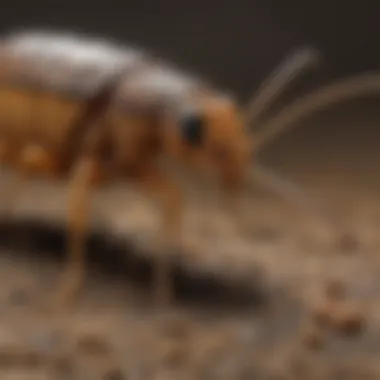
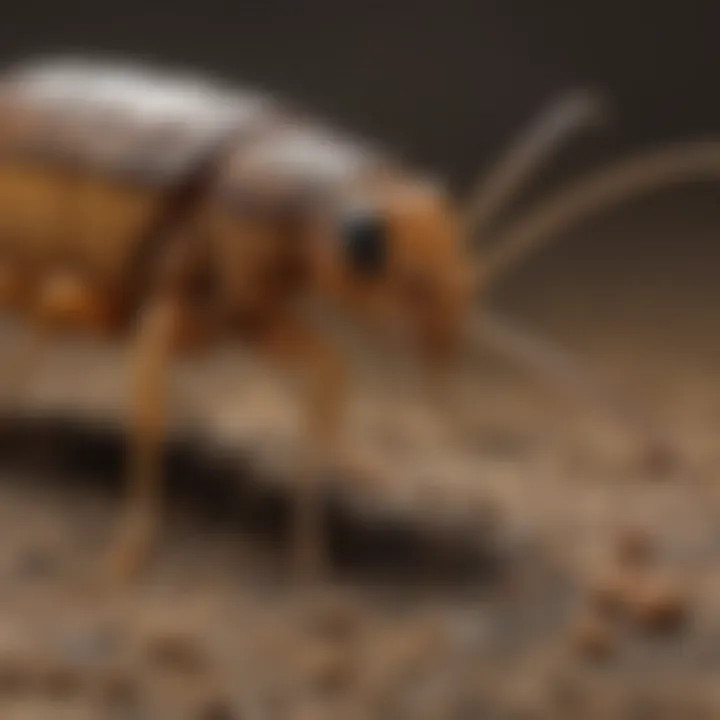
Users frequently rave about Product A's user-friendly setup and minimal maintenance needs. Moreover, the product's design allows for regular monitoring and timely bait replacement. Reviewers often mention pest control professionals recommending this product due to its proven efficacy against subterranean termites.
Product B: Features and Reviews
Product B stands out for its use of Hexaflumuron as its active ingredient. This specific compound offers a unique mode of action, effectively disrupting the termite's life cycle. The system is marketed as highly effective against drywood termites and dampwood termites, which makes it versatile in various climates.
User experiences indicate that Product B is also fairly easy to install, with straightforward instructions included. However, some consumers have reported that the bait stations may require more frequent checks compared to others. Nevertheless, many homeowners report satisfactory results in controlling termite populations, displaying its reliability as a pest management solution.
Product C: Features and Reviews
Product C combines several beneficial features, targeting a broader audience of homeowners. This system often includes advanced technology for monitoring bait consumption. It utilizes a blend of active ingredients, which increases its efficacy against different termite species.
Most reviews reveal that customers appreciate its eco-friendly components, making it a preferred choice for those concerned about environmental impacts. While installation is considered somewhat straightforward, some users have noted a slight learning curve. Yet, the overall consensus highlights Product C's effectiveness, especially in large properties with high infestation risks. Users often commend the system's long-lasting bait, contributing to fewer replacements and cost savings in the long run.
Through careful evaluation of these popular options, homeowners can make informed decisions. Each product has its unique advantages and considerations, allowing for tailored pest management strategies.
Installation and Maintenance of Baiting Systems
The effectiveness of termite baiting systems largely depends on proper installation and routine maintenance. Understanding how to correctly set up these systems ensures that they function at peak performance. Additionally, ongoing maintenance is crucial to maximize longevity and effectiveness against infestations. This section offers insights into the essential steps for installation, alongside maintenance requirements, fostering a comprehensive comprehension for homeowners.
Steps for Proper Installation
Installing termite baiting systems is a multi-step process that requires careful planning and execution. Below are the key steps to ensure effective installation:
- Site Assessment: Before leading into installation, assess the property for signs of termite activity. Identify areas where termites are likely to enter.
- Choosing Placement: Position the bait stations strategically around the perimeter of the home, focusing on areas with high moisture or wood contact.
- Digging Holes: Using a post hole digger or shovel, excavate holes to the indicated depth as specified by the baiting system’s instructions. Ensure spacing is adequate according to the system's guidelines.
- Installing the Bait Stations: Place the bait stations into the holes without forcing them. The top of the stations should be slightly below ground level to ensure they remain undisturbed.
- Filling the Holes: Backfill with soil, ensuring stabilization but avoiding overpacking which can damage the station.
- Monitoring: Once installed, monitor the baiting stations regularly. This includes checking for termite activity and replacing bait as needed.
This systematic approach helps maintain a strong defense against potential termite infestations.
Routine Maintenance Requirements
Routine maintenance of termite baiting systems is essential for their long-term efficacy. Here are vital maintenance tasks to be implemented:
- Regular Inspections: Inspect bait stations every few weeks, especially in initial months post-installation. Look for signs of termite activity and ensure bait is present.
- Replacing Bait: Bait may need replacement depending on consumption by termites or degradation from environmental conditions. Always refer to product guidelines for the best frequency.
- Cleaning Stations: Occasionally, debris can obstruct stations. Clean around the bait stations to keep them accessible and functional. This ensures easy monitoring.
- Reassessing Conditions: Seasonal changes can affect termite behavior. Reassess the external conditions, such as moisture levels and vegetation encroachment, to ensure the baiting system remains effective.
Regular maintenance not only ensures the longevity of the baiting system but also provides peace of mind for homeowners, knowing that they are actively working to protect their home from termite damage.
With proper installation steps and stringent maintenance practices, the efficacy of termite baiting systems can be maximized. By understanding these essential aspects, homeowners can significantly mitigate the risk of termite infestations.
Effectiveness Against Different Termite Species
Understanding the effectiveness of termite baiting systems against various termite species is crucial for homeowners and pest management professionals alike. Each species of termite exhibits unique behaviors, habits, and vulnerability to baiting systems. Evaluating efficacy accurately allows for tailored management strategies that can significantly enhance control measures.
Efficacy on Subterranean Termites
Subterranean termites, particularly the Eastern subterranean termite, Reticulitermes flavipes, are well-known for their destructive potential. These termites live underground, making them typically challenging to detect. Termite baiting systems work effectively against subterranean termites because these termites must constantly seek food sources, which leads them to bait stations placed strategically around the property.
Once termites find and consume the bait, they take the active ingredients back to their colonies. This behavior allows for a progressive elimination strategy, as the chemicals spread among other members in the colony. According to various studies, termite baits containing Noviflumuron hinder chitin synthesis in termites, effectively disrupting their ability to grow and regrow. This has proven effective for the control of entire colonies with adequate implementation.
"Subterranean termites rely heavily on their foraging behaviors for food discovery. This trait makes them more susceptible to bait systems compared to other termite species."
Regular monitoring of bait stations is necessary to ensure that they remain attractive and functional for the target termites. Homeowners should understand that complete elimination may take longer than traditional liquid treatments, but the result tends to be more thorough and sustainable over time.
Efficacy on Drywood Termites
Drywood termites present a different challenge for baiting systems. Unlike their subterranean counterparts, drywood termites, such as Incisitermes minor, do not require contact with soil. They infest dry wood, making them harder to treat with bait systems because the colonies are often hidden within structures. Therefore, baiting strategies against drywood termites are less effective compared to baiting efforts directed at subterranean species but can still play a role in monitoring and management.
Most bait systems focus on wood-contact insecticide, which can penetrate drywood termite galleries. Success with these baits often vary, depending on termite feeding habits and colony size. Active ingredients in some bait products may not provide immediate results, leading to frustration among homeowners waiting for visible change. Nevertheless, the continuous use of bait systems helps in tracking the presence of drywood termites and can lead to intervention before an infestation escalates.
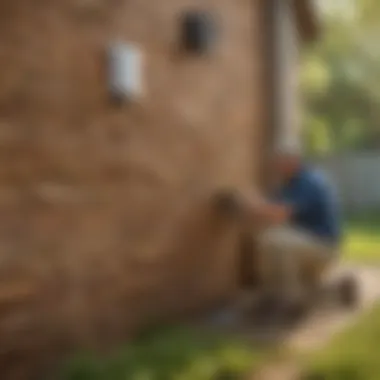

Baiting systems can be combined with physical inspections and traditional treatment methods, allowing for a more comprehensive approach to managing drywood termite threats. This dual strategy can provide a better assurance of protection for wooden structures.
Addressing Common Misconceptions
Understanding termite baiting systems is crucial not only for pest control professionals but also for homeowners. Addressing common misconceptions can significantly influence the decision-making process regarding termite management. Misunderstandings about how these systems operate can lead to ineffective pest control efforts or unnecessary anxiety. This section aims to clarify prevalent myths and offer a clearer perspective on the effectiveness and utility of baiting systems.
Misconceptions About Baiting Systems
There are numerous misconceptions about termite baiting systems that can mislead homeowners. One primary misconception is that baiting systems work instantaneously. Many people believe that once a bait station is installed, the termites will be eliminated quickly. In reality, termite baiting requires time and patience. It is designed to disrupt the entire colony, not merely eliminate visible termites.
Another widespread belief is that baiting systems are ineffective against certain species of termites, particularly drywood termites. This notion fails to consider that the efficacy of baiting systems can depend on various factors, including proper placement and environmental conditions.
Some homeowners also think that baiting systems can replace traditional treatments entirely. While baiting systems can be beneficial, they are often most effective when used as part of a comprehensive termite management plan that may include other types of treatments.
- Baiting systems work quickly: This is false; they require time to eliminate colonies gradually.
- Ineffective against drywood termites: Baiting systems can be effective with the correct approach.
- Can replace all treatments: Baiting systems are most effective when used with other methods.
Truths Behind Efficacy Claims
When evaluating the effectiveness of termite baiting systems, it is essential to analyze the claims presented by manufacturers and pest control experts. One significant truth is that baiting systems can offer a long-term solution for termite control when correctly implemented.
Moreover, baiting systems are designed with active ingredients that target the termites specifically, ensuring that the bait is not harmful to the environment or non-target species. The popular active ingredients, Noviflumuron and Hexaflumuron, are known for their slow-acting properties, which allow termites to spread the bait throughout their colony, leading to more effective control outcomes.
Furthermore, continuous monitoring and maintenance of the bait stations can significantly enhance their effectiveness. Regular checks help ensure that bait levels are sufficient and that termiticide is still present in the stations. This proactive approach can lead to more efficient eradication of termite colonies.
To summarize:
- Long-term effectiveness: Baiting systems are capable of providing sustained control.
- Environmentally friendly ingredients: Many active ingredients minimize risk to non-target species.
- Importance of monitoring: Routine checks maximize the effectiveness of the system.
"The success of termite baiting systems lies in understanding their function and utilizing them effectively within an integrated pest management strategy."
Expert Recommendations for Homeowners
When it comes to managing termites, homeowners often seek guidance on the best practices and solutions available. This section focuses on expert recommendations that can significantly enhance the efficacy of termite baiting systems. Understanding how to implement these recommendations allows for a more effective approach to preventing termite damage and ensuring the longevity of one’s investment in their property.
Best Practices for Implementation
Implementing termite baiting systems requires careful planning and execution. Here are several key practices to consider:
- Choose the Right System: Not all baiting systems are created equal. Research various brands like Sentricon, Exterra, and Advance to understand their features, benefits, and user feedback. Choose a system that aligns with the specific type of termites present in your area.
- Correct Placement: Bait stations must be strategically placed around the perimeter of the home. Consult with pest control professionals to determine optimal locations, ensuring that these stations are installed in areas with visible termite activity. This improves the likelihood of attracting foraging termites to the bait.
- Regular Monitoring: Regular checks are essential to track the effectiveness of the baiting system. Homeowners should commit to monitoring the stations, ensuring that bait is replenished as needed and that stations remain undisturbed.
- Use Integrated Pest Management: Integrating baiting systems with other pest management strategies provides a holistic approach. This might include reducing moisture around the home or eliminating wood-to-soil contact. Such practices enhance the effectiveness of baiting systems.
Long-term Monitoring Strategies
Long-term monitoring is crucial in ensuring that termite baiting systems remain effective over time. Here are some strategies homeowners should adopt:
- Establish a Monitoring Schedule: Homeowners should create a routine monitoring schedule, checking bait stations every few months. Regular checks help in early detection of termite activity, ensuring prompt action can be taken if necessary.
- Record Keeping: Maintain a log of findings from each monitoring session. Document the condition of bait stations and note any signs of termite activity. This can provide valuable insight over time and assists professionals in evaluating overall system effectiveness.
- Professional Inspections: Engage pest control experts for annual inspections. These inspections can reveal not only the status of the bait system but also any new signs of termite infestations.
- Adapt to Findings: Be open to changing strategies based on monitoring results. If a particular area shows consistent termite activity, consider adding additional bait stations or switching to alternative pest control methods.
Remember: Proactive management is key. Consistent monitoring and adjustments can drastically reduce the risk of significant termite damage.
Implementing best practices and establishing long-term monitoring strategies empowers homeowners to take control of their termite prevention efforts. By adhering to expert recommendations, they can better safeguard their homes and investments.
The End: Making Informed Decisions
Deciding on a termite management strategy is critical for homeowners. The presence of termites can lead to significant structural damage if not addressed promptly. Thus, understanding the nuances of termite baiting systems is essential. The conclusion of this article synthesizes the information presented throughout and highlights several key elements regarding decision-making in pest control.
First, it's important to evaluate the effectiveness of various baiting systems against different species of termites. Not all systems will work equally well for every type of termite. For instance, subterranean termites may respond better to certain active ingredients compared to drywood termites. Recognizing these differences guides homeowners in selecting the right product based on their specific situation.
Moreover, the analysis of installation and maintenance techniques is vital. A system improperly installed may fail to protect a home adequately and could result in further infestations. Homeowners should be aware of the required procedures and schedule for maintenance to ensure that the baiting system functions optimally. Regular checks and refills are essential for success, contributing to increased efficacy over time.
Choosing the right termite baiting system often involves weighing advantages and disadvantages of each option. This article has provided detailed insights into popular products, revealing user experiences that inform potential buyers about the realistic expectations and outcomes. Understanding both the strengths and weaknesses of various products allows for a balanced decision.
Lastly, this article addresses common misconceptions surrounding termite baiting. Many homeowners underestimate the importance of a systematic approach to pest management. By dispelling myths and clarifying truths, this article seeks to empower readers to make educated decisions.
"Knowledge is key in pest management; understanding your options can save you time and money."



